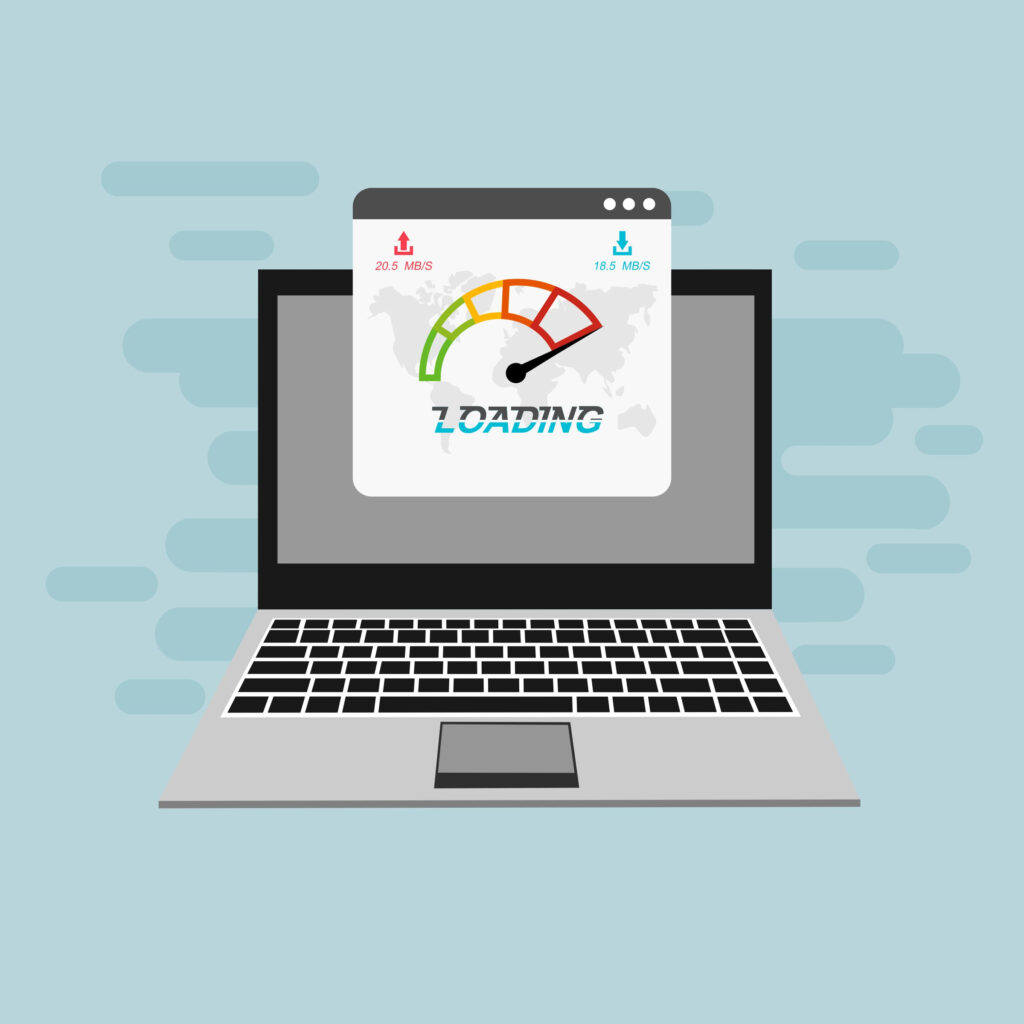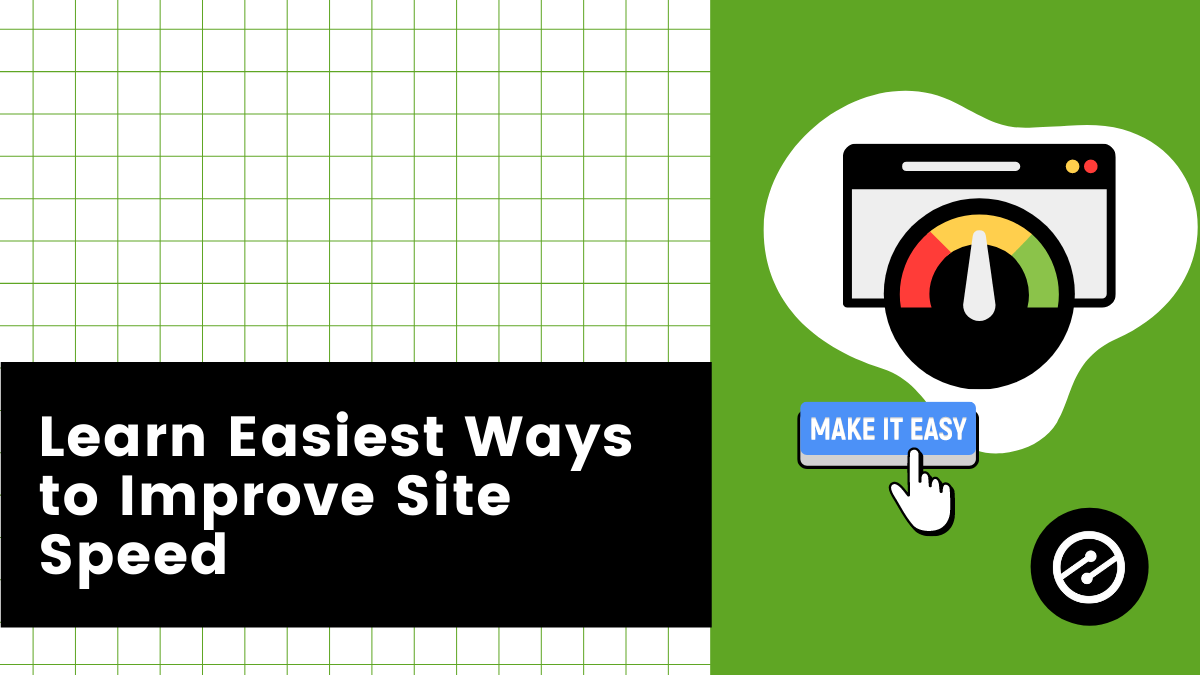When a customer has a slow experience at a restaurant, it can result in poor reviews and lower overall customer satisfaction. Slower site speed is very similar in that way as it can affect search engine rankings and user experience.
Website speed refers to how fast a web page loads in a browser. A poor-performing site can cause users to leave, while a fast-moving site can attract more visitors and improve conversion rates.
Today we’ll talk about ways to improve site speed.

Leverage a caching, page speed plugin/tool
There are a number of factors that can affect a website’s page load speed, and many of them are beyond the expertise of an average marketer. Fortunately, there are many plugins and modules that can help improve your site’s performance.
Cached pages are served up as static HTML versions of a particular page in order to avoid time-consuming queries to your website’s database. A cached web page loads much quicker—while decreasing server load by up to 80%. WordPress users can easily install one of the many popular page caching plugins such as W3 Total Cache or use Ezoic’s cloud caching suite, though it is a general best practice to have as few plugins as possible.
A robust page speed solution for WordPress websites such as Ezoic can not only handle page caching (replacing the need for a plugin like W3 Total Cache) but also a slew of other page-speed optimization methods such as:
- Enabling browser caching
- LazyLoading images and video
- Minifying resources (HTML, CSS, JS)
- Removing query strings from static resources
- Combining files (Google fonts, CSS, JS)
- Optimizing the database
- Loading CSS files asynchronously
- Loading JS files deferred
Upgrade your hosting

Something that commonly gets overlooked is your hosting package. On many occasions, publishers believe that all web hosts are created equal, which isn’t the case. Simply put, it’s another instance of getting what you pay for.
The quality of the web hosting package is often the biggest factor that affects a website’s page load speed. While it can be tempting to use a shared hosting platform, it’s important to consider a high-performing server with faster technology stacks, dedicated resources and a host of options to improve server performance.
Other tips to improve site speed
There are many factors that can affect a website’s page load speed. While some of these are within your control, hiring a web development partner or using a platform like Ezoic can help you improve your site’s performance. Here are several other considerations for improving your website page loading speed:
Minimize HTTP requests – This gets down to the nitty-gritty of web development, but decreasing the total number of pieces of the webpage (such as images, scripts, etc.) that need to be loaded can reduce page load time.
Enable Gzip compression – Gzip compresses your webpages and style sheets before sending them over to the browser. This reduces the page size by up to 70% which can also drastically reduce transfer time.
Use a CDN (Content Delivery Network) – Leveraging a CDN can improve your site speed by hosting website files across a large network of servers around the world. This allows users to download files from servers that are close to them and spreading the bandwidth decreases page load time. Websites that use a CDN load much more quickly. Take a look at Cloudflare, a certified seamless Ezoic partner, for an example of a CDN.
Configure server settings – Server software (such as Apache) out-of-the-box is not always sufficiently configured for optimal website performance. Consult with your hosting provider on how best to “performance tune” your server for your website and content management system (CMS).
Ezoic sites that lead by example
We have a ton of great sites featured on Ezoic that are the epitome of perfect site speed. With Leap, our toolset to optimize and improve site speed, these were able to achieve excellent Core Web Vitals.
In fact, to kick off 2022 we gave out awards, including the Site Speed Award given to 5 publishers.
You can’t improve what you can’t measure. That’s why Leap gives insights into all the Core Web Vitals with recommendations to improve your scores.
For example – you can fix your slow loading times from jQuery by turning on the Core jQuery Feature Preload. When everything is working to its best abilities, you’ll see the “Optimized by Leap” Tag above.
Here’s another recommendation that should be fixed immediately inside a Leap dashboard. A teal or “toxic” emblem signifying an issue.
What’s great is that publishers of all sizes will be able to view field data as well as lab data if your site has no field data.
Additionally, you’ll have access to the leaderboard consisting of other sites using Leap. In here, you’ll be able to see top performing sites and what Ezoic features, hosts, CMS, settings, and plugins they’re using. With a click, you have the ability to adopt the settings of another user to see how your site performs.
From here, you’ll be able to understand which technologies are working on your site, and which could be replaced to enhance the speed.
Just as important, you’ll see a “Settings History” drop-down in “Optimization Settings” tab for an ease of understanding your site better and for debugging.
What’s next?
With all that said, you can start today and improve site speed. Some pieces will take time, effort, or help from others.
Be sure to take a look at these other blogs related to site speed.
Leap Available to All: Plus See What the Fastest Sites Have in Common


I use a dedicated server but since all website requests go through Ezoic does my own host performance matter that much? If the difference is slight I could save by using a shared host instead.